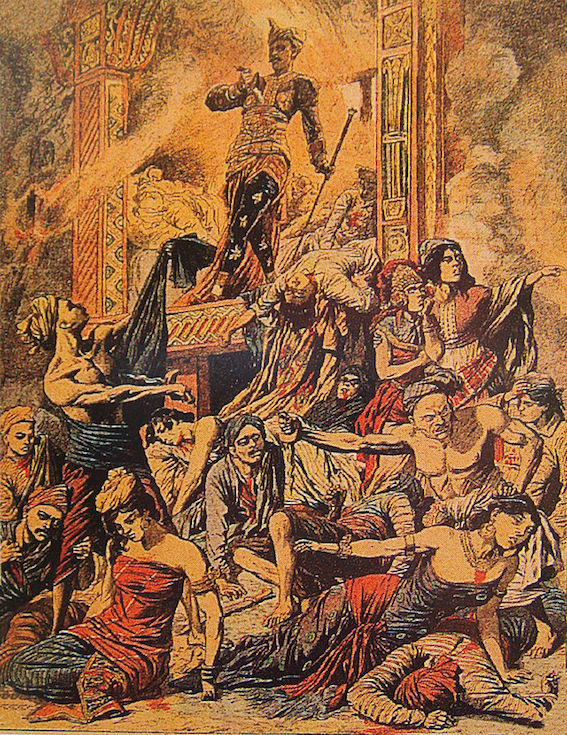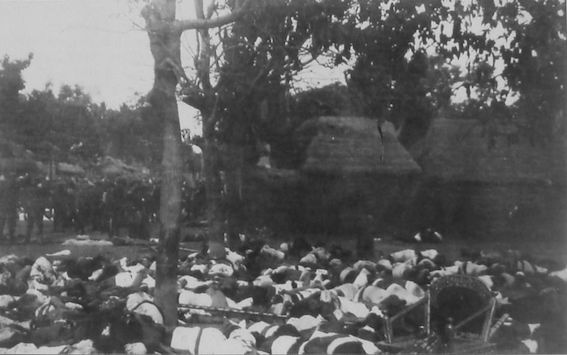Puputan ("Fight to the death")
The force marched to Denpasar, Bali, as if in a dress parade.[2] They approached the royal palace, noting smoke rising from the puri and hearing a wild beating of drums coming from within the palace walls.
Upon their reaching the palace, a silent procession emerged, led by the Raja being borne by four bearers on a palanquin. The Raja was dressed in traditional white cremation garments, wore magnificent jewelry, and carried a ceremonial kris. The other people in the procession consisted of the Raja's officials, guards, priests, wives, children and retainers, all of whom were similarly attired.[2] They had received the rites of death, were dressed in white, and had had their ritual kris blessed.[6]

When the procession was a hundred paces from the Dutch force, they halted and the Raja stepped down from the palanquin and signalled a priest, who plunged his dagger into the Raja's breast. The rest of the procession began killing themselves and others, in a rite known as Puputan ("Fight to the death").[2] Women mockingly threw jewelry and gold coins at the troops.[2]
A 'stray gunshot' and an 'attack by lance and spear' prompted the Dutch to open fire with rifles and artillery. As more people emerged from the palace, the mounds of corpses rose higher and higher.[2] The whole procession numbered hundreds,[6] and is said to have been over 1,000 people in all. It was mown down by Dutch gunfire.[7]
Alternative accounts describe that the Dutch first opened fire on the Balinese mass moving outside of the palace gate, only equipped with traditional krises, spears and shields, and that survivors killed themselves, or had themselves killed by their followers according to the dictates of the puputan.[7]

The soldiers stripped the corpses of the valuables and sacked the ruins of the burned palace. The palace of Denpasar was razed to the ground.[7]
The same afternoon, similar events occurred in the nearby palace of Pemecutan, where the co-ruler Gusti Gede Ngurah resided. The Dutch let the nobility at Pemecutan kill themselves, and proceeded with the looting.
The massacre is remembered locally as the "Badung Puputan" and is glorified as an example of resistance to foreign aggression. A huge bronze monument was elevated on the central square of Denpasar, where the royal palace used to stand, glorifying Balinese resistance in the Puputan.
visit: about Puputan on wikipedia<
| Attachment | Size |
|---|---|
| Puputan1.jpg | 252.7 KB |
| Puputan_2_1906.jpg | 43.35 KB |
- Editor1's blog
- Login to post comments